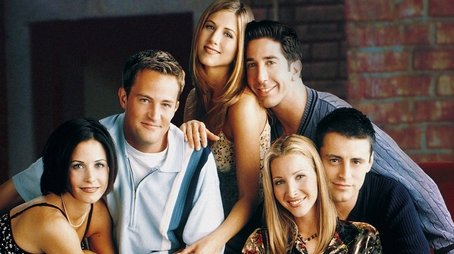
Ask Your Own Question
What is the plot?
In "Dr. Mom: Cuddy's storyline," the episode opens with Dr. Lisa Cuddy reflecting on her life as a mother and a doctor. The scene is set in her office at Princeton-Plainsboro Teaching Hospital, where she is surrounded by medical files and personal mementos. Cuddy is visibly stressed, juggling her responsibilities as a hospital administrator and her role as a mother to her adopted daughter, Rachel. The camera captures her deep sighs and furrowed brows, indicating her internal struggle.
As the narrative unfolds, Cuddy receives a call from the daycare center informing her that Rachel is sick. This news sends her into a flurry of activity as she rushes to pick up her daughter. The urgency of the situation is palpable; Cuddy's frantic movements and worried expressions highlight her concern for Rachel's well-being. She arrives at the daycare, where she finds Rachel with a slight fever, and her heart sinks at the sight of her daughter looking unwell.
Once home, Cuddy attempts to comfort Rachel, who is restless and whiny. Cuddy's nurturing side emerges as she tries to soothe her daughter with a warm blanket and a favorite toy. However, her professional instincts kick in when she notices Rachel's symptoms are not just typical for a cold. Cuddy's internal conflict grows as she debates whether to treat Rachel herself or seek help from her colleagues at the hospital. The tension in her face reveals her desire to be both a caring mother and a competent doctor.
Later, Cuddy decides to call Dr. Gregory House for advice, knowing he has a unique perspective on medical issues. The scene shifts to House's office, where he is engaged in his usual antics, displaying his characteristic sarcasm and wit. Cuddy explains Rachel's symptoms over the phone, and House's dismissive attitude frustrates her. He suggests that Cuddy is overreacting, which only heightens her anxiety. The conversation showcases the complicated dynamic between Cuddy and House, blending their personal history with professional tension.
As Rachel's condition worsens, Cuddy's worry escalates. She takes her daughter to the hospital, where she is met by her colleagues, including Dr. James Wilson and Dr. Eric Foreman. The hospital setting is bustling, filled with the sounds of beeping machines and hurried footsteps. Cuddy's protective instincts kick in as she insists on being involved in Rachel's care, despite her colleagues' attempts to reassure her. The emotional weight of the situation is evident as Cuddy struggles to maintain her composure while advocating for her daughter.
In the examination room, the doctors conduct tests on Rachel, revealing that she has a viral infection. Cuddy's relief is short-lived as she grapples with the implications of her daughter's illness. The scene captures her vulnerability, showcasing her fear of not being able to protect Rachel from harm. Cuddy's internal monologue reveals her deep-seated fears of failing as a mother, which are exacerbated by her professional responsibilities.
As the episode progresses, Cuddy faces a pivotal moment when she must decide whether to allow Rachel to stay in the hospital for observation or take her home to recover. The emotional stakes are high, and Cuddy's decision-making process is fraught with tension. She ultimately chooses to keep Rachel in the hospital, prioritizing her daughter's health over her own desire to be a hands-on mother. This choice reflects Cuddy's growth as she learns to balance her roles.
The climax of the episode occurs when Rachel's condition takes a turn for the worse, leading to a moment of panic in the hospital. Cuddy's fear is palpable as she rushes to her daughter's side, her heart racing. The medical team springs into action, and Cuddy's instincts as a doctor kick in. She collaborates with her colleagues, demonstrating her ability to navigate the crisis while still being a mother. The scene is intense, filled with urgency and emotion as Cuddy fights to ensure Rachel receives the best care possible.
In the aftermath of the crisis, Rachel stabilizes, and Cuddy is left to reflect on the experience. The hospital room is quieter now, and Cuddy sits beside her daughter, holding her hand. The emotional weight of the day settles in as Cuddy contemplates her dual roles. The camera lingers on her face, capturing a mix of relief, exhaustion, and determination. Cuddy's journey throughout the episode highlights her resilience and commitment to both her family and her career.
The episode concludes with Cuddy leaving the hospital with Rachel, a sense of peace washing over her. As they walk out together, Cuddy's expression softens, revealing a newfound understanding of her identity as both a doctor and a mother. The final shot captures the bond between Cuddy and Rachel, symbolizing her acceptance of the challenges that come with balancing her personal and professional life.
What is the ending?
In the ending of "Dr. Mom: Cuddy's storyline," Cuddy faces the emotional turmoil of her past as she navigates her relationship with her mother and her role as a caregiver. The episode concludes with Cuddy coming to terms with her feelings, ultimately finding a sense of closure regarding her mother's influence on her life and her own identity as a doctor and a person.
As the episode unfolds, we see Cuddy in her office, reflecting on her childhood memories. The scene transitions to a flashback where young Cuddy is seen interacting with her mother, who is portrayed as a complex figure--both nurturing and demanding. This juxtaposition highlights the conflicting emotions Cuddy has towards her mother, who has always been a source of both inspiration and pressure.
In the present, Cuddy is confronted with her mother's declining health. The emotional weight of this situation is palpable as Cuddy struggles with her feelings of resentment and love. She grapples with the memories of her mother's expectations and the impact they have had on her life choices. The tension builds as Cuddy must decide how to approach her mother's care, reflecting her internal conflict about being both a daughter and a doctor.
As the episode progresses, Cuddy's interactions with her mother reveal deep-seated issues. There are moments of vulnerability where Cuddy expresses her frustrations, and her mother responds with a mix of defensiveness and affection. This dynamic showcases the complexity of their relationship, emphasizing the themes of forgiveness and understanding.
In the climax of the episode, Cuddy has a breakthrough moment. She confronts her mother about the past, leading to an emotional exchange that allows both characters to express their feelings openly. This cathartic moment serves as a turning point for Cuddy, who begins to reconcile her feelings of inadequacy and the pressure she has felt throughout her life.
The episode concludes with Cuddy finding a sense of peace. She acknowledges her mother's influence but also asserts her own identity as a doctor and a person. The final scenes depict Cuddy leaving her mother's side with a newfound clarity, symbolizing her acceptance of her past and her commitment to her future.
In summary, the ending of "Dr. Mom: Cuddy's storyline" encapsulates Cuddy's journey of self-discovery and healing. The fate of Cuddy is one of growth and acceptance, as she learns to navigate her complex relationship with her mother while embracing her role as a caregiver and a professional. The episode closes on a hopeful note, suggesting that while the past may shape us, it does not have to define our future.
Is there a post-credit scene?
In the episode "Dr. Mom: Cuddy's storyline" from the "House" specials, there is indeed a post-credit scene.
As the credits roll, the scene opens in a quiet hospital corridor, dimly lit, with the sound of distant beeping machines echoing softly. The camera pans slowly, revealing Dr. Lisa Cuddy sitting alone in her office, her expression a mix of exhaustion and contemplation. Papers are strewn across her desk, remnants of her busy day, but her focus is elsewhere.
Cuddy gazes out the window, lost in thought, reflecting on her recent challenges as a mother and a hospital administrator. The weight of her responsibilities is palpable; her brow furrows as she considers the balance between her personal life and her career. The emotional turmoil she has faced is evident in her eyes, which glisten with unshed tears.
Suddenly, the door creaks open, and Dr. Gregory House enters, his usual swagger slightly subdued. He leans against the doorframe, arms crossed, observing her with a mix of concern and curiosity. The tension in the room shifts as Cuddy turns to face him, her expression softening slightly at his presence.
House breaks the silence with a quip, attempting to lighten the mood, but there's an underlying sincerity in his tone. He asks if she's okay, a rare moment of genuine concern from him. Cuddy, caught off guard, hesitates before responding, revealing her vulnerability. She admits that it's been tough, and for a moment, they share a connection that transcends their usual banter.
The scene closes with House offering a small, reassuring smile, a flicker of understanding passing between them. As he turns to leave, Cuddy watches him go, a mixture of gratitude and uncertainty on her face. The camera lingers on her for a moment longer before fading to black, leaving viewers with a sense of hope and the complexity of their relationship.
What challenges does Cuddy face as a mother in this episode?
In this episode, Cuddy grapples with the emotional turmoil of balancing her demanding career with her responsibilities as a mother. She faces the challenge of being a single parent while also dealing with the pressures of running the hospital. The episode highlights her internal conflict as she tries to be present for her daughter while managing her professional obligations.
How does Cuddy's relationship with House evolve in this episode?
Cuddy's relationship with House is tested throughout the episode as she seeks his help in navigating her new role as a mother. Their dynamic is filled with tension, as House often challenges her decisions and offers unorthodox solutions. Cuddy's frustration with House's lack of understanding of her maternal instincts creates a rift, but it also leads to moments of vulnerability where they both reveal their deeper fears and desires.
What specific moments highlight Cuddy's struggles with her maternal instincts?
Several poignant moments illustrate Cuddy's struggles, such as when she is torn between attending a critical meeting at the hospital and being there for her daughter during a school event. Her emotional breakdown in the hospital's break room, where she confesses her fears of failing as a mother, serves as a key moment that encapsulates her internal battle.
How does Cuddy's past influence her actions in this episode?
Cuddy's past experiences, particularly her own relationship with her mother and her childhood, heavily influence her actions. Flashbacks reveal her insecurities about motherhood, stemming from her desire to be a better parent than her own mother was. This history drives her to overcompensate, leading to moments of doubt and reflection on what it truly means to be a good mother.
What role do Cuddy's colleagues play in her storyline?
Cuddy's colleagues, particularly Wilson and Foreman, play significant roles in her storyline by providing support and advice. Wilson offers a sympathetic ear, encouraging her to embrace her role as a mother, while Foreman challenges her to prioritize her responsibilities at the hospital. Their interactions serve to highlight the contrasting perspectives on work-life balance and the pressures of motherhood.
Is this family friendly?
"Dr. Mom: Cuddy's storyline" from the "House" specials features themes and scenes that may not be considered family-friendly. Here are some potentially objectionable or upsetting aspects:
-
Medical Procedures: The episode includes graphic depictions of medical conditions and treatments, which may be unsettling for children or sensitive viewers.
-
Emotional Struggles: Cuddy grapples with complex emotions related to motherhood and her professional life, including feelings of guilt and inadequacy, which may be heavy for younger audiences.
-
Family Dynamics: The exploration of Cuddy's relationship with her mother and the impact of her upbringing may touch on themes of neglect and emotional conflict, which could be distressing.
-
Personal Sacrifice: Cuddy faces difficult choices that highlight the sacrifices made for family, which may resonate deeply and evoke strong emotions.
-
Intense Conversations: There are moments of tension and conflict in dialogue that may be intense or uncomfortable for younger viewers.
These elements contribute to a narrative that is more suited for mature audiences, as it delves into serious emotional and psychological themes.

















